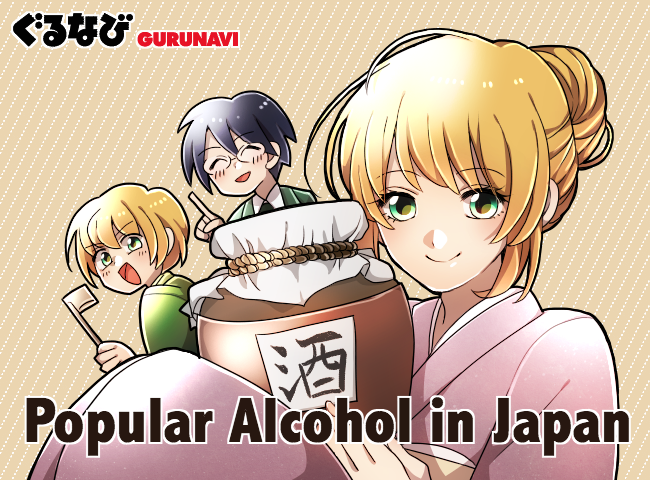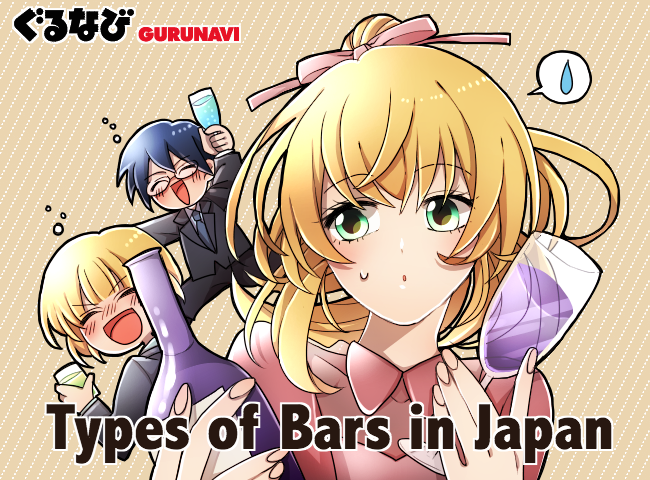Guide to Umeshu (Japanese Plum Wine): A Sweet & Sour Tipple

Umeshu is a traditional type of Japanese liqueur made from ume plums steeped in sugar and alcohol. Ume were brought to Japan from China over 1,000 years ago, and have long been beloved during late winter and early spring months for their beautiful pink blossoms.
Umeshu was first consumed as a medicine to soothe sore throats, but during the Showa period, the liquor laws were relaxed so that people were able to make their own umeshu at home. It became a popular alcoholic beverage due to its sweet aroma, sour plum flavors, and relatively low alcoholic content that made it easy to drink.
Although often referred to as “plum wine” in English, umeshu isn’t actually a fruit wine because because there is no fermenting or distilling involved in making it. Because of this, umeshu is very easy to make and many Japanese people enjoy making it at home. Read on to learn all about making and enjoying Japanese umeshu.
Discover How to Make Umeshu, How to Drink Umeshu & The Different Types
How to Make Umeshu
The basic umeshu recipe requires fresh ume plums, rock sugar, and liquor for steeping, along with a wide-mouthed jar that seals airtight, and has been sterilized.

Green unripened ume plums are typically used, although ripe yellow plums can be used for a more complex flavor. Rinse the ume plums or, optionally, soak them in water for up to eight to twelve hours to remove any astringency and create a smoother flavor. Drain the fruit, as excess water can cause the batch to spoil, and then use a skewer or other fine-pointed tool to remove the stems.
Weigh the ume plums with a kitchen scale, and for every 1kg of fruit, add 1/2kg of sugar in layers with the plums to the jar. Rock sugar is recommended, but granulated sugar can be used if you shake the mixture everyday. Pour over 2L of alcohol for every 1kg of plums and store the jar in a cool, dark place for at least six months. You can allow it to steep longer for a better, more mellow flavor.
Umeshu can be made with different kinds of alcohol, but the most common is Japanese shochu, a spirit made from barley, potatoes, or rice that is stronger and less sweet than nihonshu (Japanese sake, or rice wine). Umeshu made with shochu is generally stronger and has a sweet, cloying flavor.
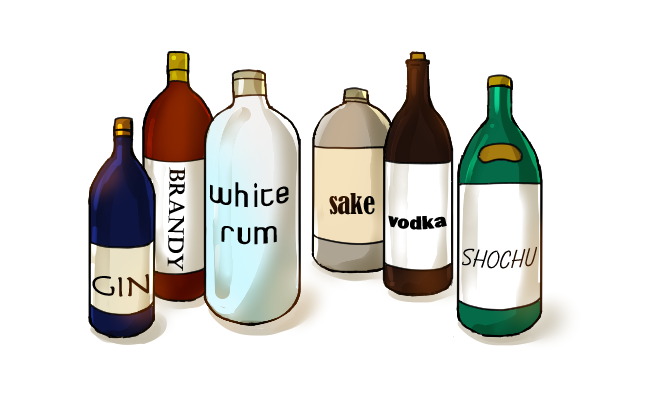
Brandy and other clear liquors like vodka, white rum, and gin may also be used. Recently, umeshu made with nihonshu has also become popular. This type has a lighter mouthfeel and more of a rice wine aroma.
How to Drink Umeshu
There are many different ways to drink and enjoy umeshu.
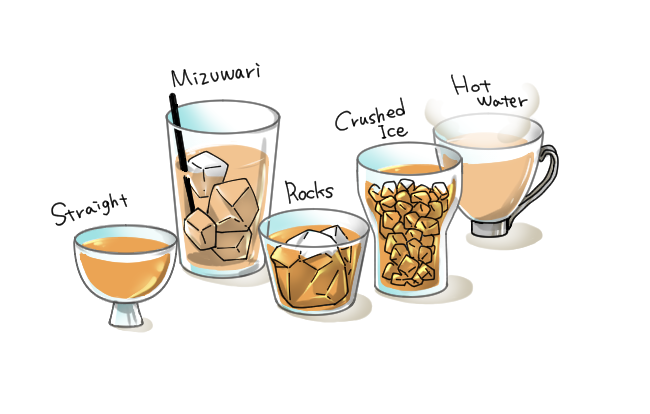
Straight
For the purest drinking experience, chilled umeshu can be enjoyed straight up so that the flavors are not diluted by melting ice.
With Ice
The most common way to drink umeshu is on the rocks. The ice may be larger rocks or crushed, for an even more refreshing version. Many commercial brands of umeshu contain a liqueur-steeped ume plum that can be added to your drink and nibbled on for a heady treat.
With Water
Those who are not so partial to strong beverages may order umeshu served “mizuwari” style, meaning blended with chilled water for a mellower drink. It may also be mixed with green tea “ochawari” style or hot water “oyuwari” style during the winter for a delicious hot drink to warm the body when it’s cold out. The sweet and fruity flavor of umeshu make it perfect for drinking with soda water (“sodawari” style).
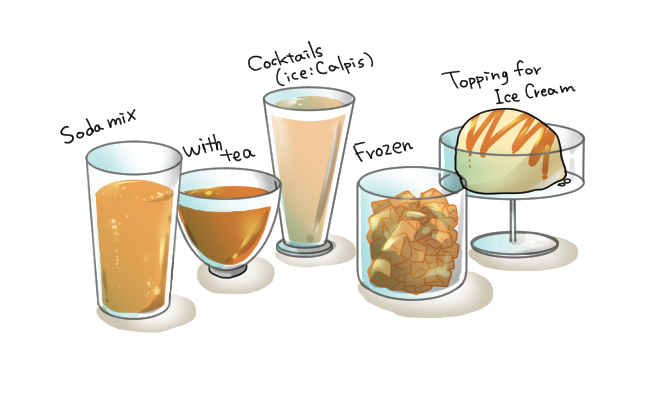
Umeshu Cocktails
Umeshu is also a popular cocktail ingredient, such as blended with Calpis yogurt soft drink, ginger ale, iced tea, or even wine or beer.
Frozen
It can even be used for a frozen adult treat, served “mizorezake” style (similar to a frozen margarita) or poured over ice cream.
Types of Umeshu
In addition to the standard umeshu, Japanese plum wine can be made in various styles.
Nigori (With Pulp/ Unfiltered)

You may be familiar with the term “nigori”, meaning “cloudy”, from drinking sake. It refers to sake that is unfiltered and has a cloudy, rather than clear appearance. Similarly, nigori umeshu is plum wine that has finely grated pulp from the ume plums that were used to brew the umeshu. The pulp is full of flavor from steeping in the liqueur for months.
Genshu (Undiluted)
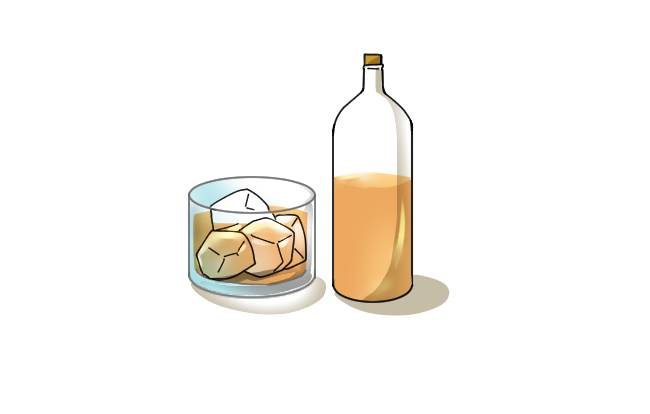
Commercial umeshu manufacturers may blend stronger batches of umeshu with water so that every brew has a consistent alcohol content. But if an umeshu is labeled “genshu”, that means it is sold at its natural undiluted strength. This type of plum wine is popular to drink with ice.
Sparkling Umeshu

For a light, effervescent drink that’s perfect in the springtime, be sure to try sparkling umeshu. The gentle sourness of the carbonation pairs well with the natural sweetness of umeshu. Some brands even offer sparkling umeshu blends made with other juices like apple, orange, and yuzu citrus for a delightfully fruity flavor.
Koshu (Aged)

While umeshu only takes a few months to a year to be ready, mature umeshu can be aged in an oak cask like whisky for a more mature flavor.
Kokuto (Brown Sugar)

Umeshu can also be made with brown sugar rather that white sugar for a deeper fragrance and greater sweetness.
With so Many Ways to Drink Umeshu (Japanese Plum Wine), There’s a Style for Everyone!
Now you know what umeshu is—a wonderfully delicious Japanese plum liqueur that can be enjoyed even by those who are not strong drinkers—why not give it a try? Savor it on the rocks or with a bit of water to get the full aroma of sweet and tangy ume plums, or mix it into a cocktail for a tasty beverage. Be sure to check out Gurunavi listings for the best places to try umeshu all across Japan. Kanpai!






